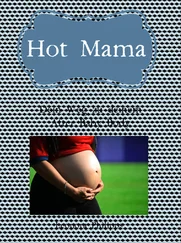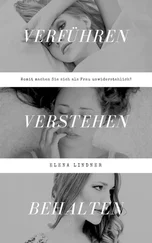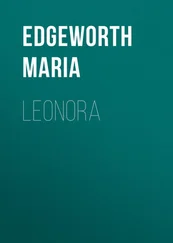Leonora writes White Rabbits and relives her dream as a premonition. If she remains in New York, she will catch leprosy. Peggy Guggenheim infects all the little rabbits who circle in her orbit.
Leonora’s behaviour in New York continues to be eccentric. The retinue gathers at the French restaurant Larre, on 56th Street, or goes round to Breton’s apartment in Greenwich Village. There they all talk enthusiastically of the new magazine VVV. Breton continues to issue orders and Jacqueline is clearly fed up. As she explains ‘he is so domineering’, and Leonora agrees with her. Sometimes the group congratulates Leonora on her eccentricities, and sometimes it condemns them. Luis Buñuel is surprised when, in the midst of a dinner at Barbara Reiss’ house, Leonora leaves the dinner table, goes into the bathroom and returns soaking wet, with her dress clinging to her body. She comes back to the dining room streaming with water, sits down opposite Buñuel and stares at him fixedly:
‘I just took a shower.’
‘With your clothes on?’
‘Yes.’
‘Then I shall take you back home.’
‘You are a very attractive man,’ she tells Buñuel, clutching his arm. ‘You remind me of my prison warder, Luis Morales.’
There’s no doubt about it, Buñuel is a good man. Leonora was not there for the screening of L’Age d’Or in Paris, the night on which the League of Patriots and the Anti-Jewish League threw paint at the screen, and slashed four Surrealist canvases hanging in the cinema lobby. This time, Buñuel takes her arm instead, and his prominent eyes sweep over her. When she looks back at him with anguish, he tells her: ‘I am the one of us here who has been excommunicated,’ and his smile pacifies her. ‘Being a man condemned sets you above the multitude. They expelled Charles de Noailles from the Jockey Club, and it was all the fault of my film, which he directed. That day we opened a bottle of champagne. Would you like us to go and have a glass somewhere now?’
Her gastronomic experiments also cause a sensation. She invites André Breton and Marcel Duchamp round to eat and serves them a rabbit stuffed with oysters.
Nobody wants anything more to do with Dalí. ‘He’s a whore.’ ‘He’s gone too far now.’ Not even Max continues to meet up with Gala, his ex-lover, except that now he refers to her by her given name: Elena Ivanovna Diakonova. Being extravagant is a means to acquire celebrity and Surrealists are not interested in glory.
There are days on which Leonora reverts to Villa Covadonga, back to her former state of depression. On others, her rage makes her laugh. In one restaurant she smears her feet in mustard:
‘That’ll make that pompous waiter put us out on to the street.’
Buñuel tells her of an experiment conducted by some North American scientists, about a couple shut up in a cage, who would not be fed for the duration of the test. In love, they agreed to being guinea pigs. As their hunger increased, the lover forgot about his love, and they had to remove the love birds before they killed one another.
‘Did he leave any bones?’
‘Ay, Leonora!’
‘I understood that he had devoured her.’
‘No, it didn’t happen quite like that.’
‘Do you think that Max would have sacrificed himself for me?’
Buñuel chose to tell her the story of the book he liked best. Two good friends who had lost touch with each other decided to meet up again. One, crazy with joy, took the train to the country house of the other, who was awaiting him anxiously. Gradually, they became aware that they actually had nothing at all to say to each other.
‘Are you telling me this because of Max?’
‘No, Leonora, and please stop bringing everything back to your own situation.’
‘Do you really think that Max and I have nothing to say to each other?’
‘Leonora, please don’t start.’
To Renato, his wife’s behaviour does not provide cause for concern. The fact is he spends so little time with her that he isn’t really keeping up. Leonora feels safe when she’s with him and, in order to please her, Renato sometimes accompanies her to her various dinners; but when he refuses to go out, Leonora doesn’t put in an appearance either, much to Max’s annoyance.
Breton and Tanguy are assiduous regulars at the gatherings and they worry about her. ‘Leonora please don’t leave off writing.’ ‘Don’t stop painting now, Leonora.’ Deep inside her, the asylum is alive and flourishing, and surfaces in the subjects she paints. In Green Tea, a Leonora swathed like a mummy in the wake of a session of electro-convulsive therapy pauses in the middle of the garden at Santander, at the centre of a circle from which there is no exit. To one side, a female hyena with a tail like a tree has a horse tethered to the trunk, with another tree for its tail, tied in its turn to the female hyena.
In Stanley William Hayter’s studio, Leonora creates her first black-and-white print on a glass plate, which allows her to relive the madness; she draws with such realistic precision that it looks as if she is copying the scene imprinted on her brain by her life itself: chained dogs facing inwards to the centre of a circle likewise endowed with a hound’s paws and face. Leonora is the same chained dog that appears in Green Tea .
‘Look here, Leonora,’ David Hare, Breton and Duchamp all tell her, ‘your sketch will be included in an original portfolio of works from VVV that we are about to launch.’
Other collaborators include Marc Chagall, Alexander Calder (the inventor of the kinetic mobile), André Masson (for whom Nietzsche is God), the macabre Kurt Seligmann, Yves Tanguy, André Breton, Roberto Matta and Robert Motherwell.
Leonora cannot contain her surprise when Manka Rubinstein, sister to the cosmetics entrepreneur Helena, commissions a painting the size of a wall in her house.
‘I don’t even have enough money to buy a canvas as big as that,’ she admits to Max.
‘Don’t worry about it, we’ll go and see Chagall. He is the only artist now selling like hot cakes. Tell him you’ll pay him back as soon as you get the money from Helena Rubinstein,’ Duchamp proposes.
Chagall scrutinises the eight little sketches the Englishwoman presents him with and lets fall, in the strongest of Russian accents: ‘Carry on painting, little one, carry on painting,’ but he doesn’t loan her a single canvas, still less any money. Breton had the idea of taking the sheet off his bed and placing it in Leonora’s arms.
‘Here you are, and now to work. Why waste time over someone so stingy?’
Duchamp, Matta and Ernst are her assistants. The Chilean Roberto Matta is enthusiastic and, as an architect, he knows all about proportions and perspectives. His technique is to use sexual perversion as a means to understanding his subjects. Duchamp, for whom Leonora has considerable sympathy, in not taking himself seriously, fills in the background. Max signs with his little blue bird in the upper left-hand corner of the canvas.
‘Why are you signing it if the painting is Leonora’s?’ Duchamp enquires.
‘I only put in my blue bird for good luck,’ Max disingenuously pretends.
When they finish the mural, Manka Rubinstein is charmed, and hands over $200, far more than Leonora has ever previously earned for a painting.
‘Can you imagine what Helena Rubinstein must have paid for Dalí to decorate her apartment?’
One night, after a massive celebration of the success with Rubinstein together with Max, Duchamp and Matta, Leonora finally returns home to discover that Renato is not there. His absence gives rise to a severe panic attack. She seizes Leduc’s portable Olivetti typewriter and begins to write furiously:
Читать дальше












